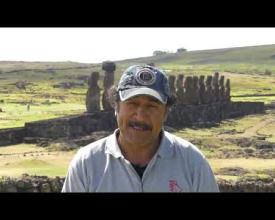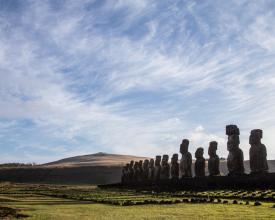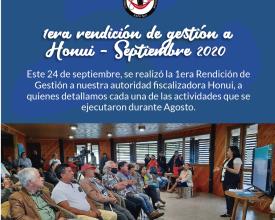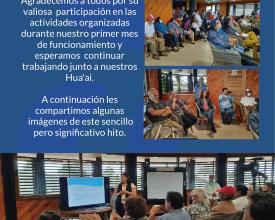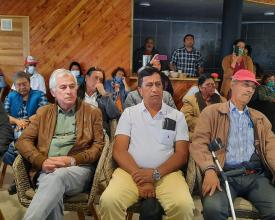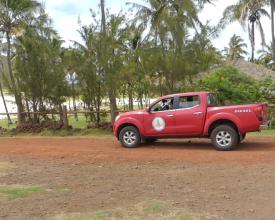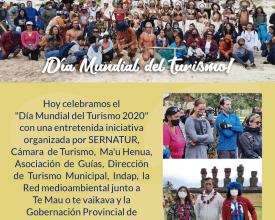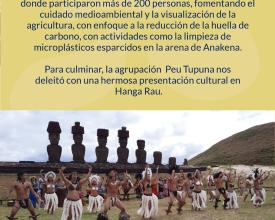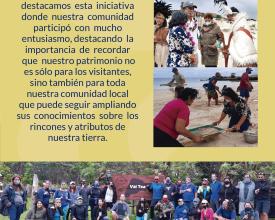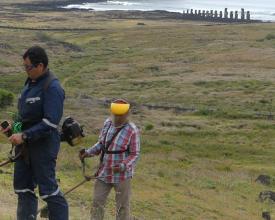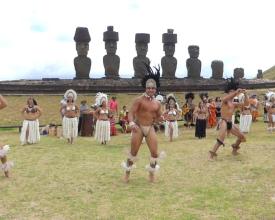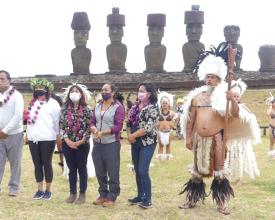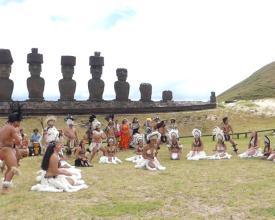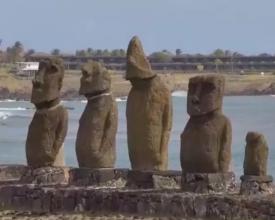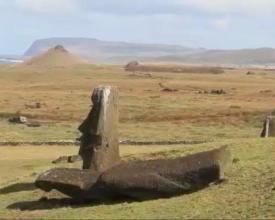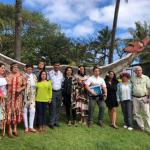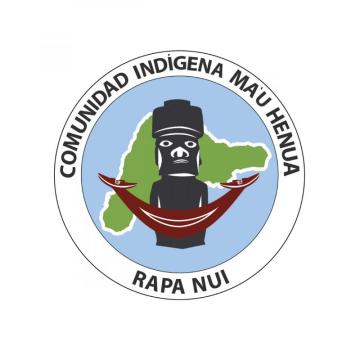
Recovering the administration of ancestral land: the establishment of the Indigenous Community Ma’u Henua, stewards of Rapa Nui National Park, Chile
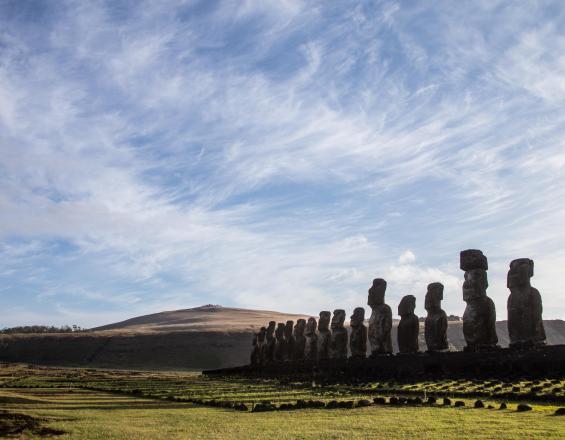
Famous for the Moai colossal stone figures, Rapa Nui island is fully protected as a Historical Monument, combining archaeological testimonies and natural values of a complex ecosystem subject to hazards and vulnerable to climate change. Approximately 40% of the island corresponds to the Rapa Nui National Park, in the World Heritage List since 1995 under criteria (i), (iii) and (v). Until then, the regulatory system conceived in the mainland in Chile had not sufficiently addressed the fragile island ecosystem, the significance of its archaeological heritage, and the uniqueness of Rapa Nui people’s cultural identity and way of life. This had a negative impact in conservation and a progressive dissociation from the community. To change this, a community-based management was proposed by the Rapa Nui community to the Government of Chile. In 2017, the Polynesian Indigenous Community Ma’u Henua was granted the park administration, assuming the challenges that internal management involves.
Context
Challenges addressed
The management has been affected by an underlying social challenge: the need of community involvement in heritage protection. The administration by external institutions generated a distance between the community and the protection and uses of their heritage. This distancing restrained the strengthening of local institutions and the capacity building of local youth in heritage management. The absence of experiences and roles in the management system limited the development of common objectives. The dissociation between the community and its heritage as well as the lack of participatory mechanisms for their involvement and the use of their traditional knowledge was reflected in the decay of the cultural and natural heritage in the island. Internal management required to establish dialogue mechanisms and education for the adequate administration, considering culturally safe protocols for the protection of cultural heritage as part of the transition from state to community administration.
Location
Process
Summary of the process
The transfer required a legal foundation, skilled human resources and knowledge (BB1 & BB2). Ma’u Henua involved youth with higher education and professional experience who were looking for opportunities in the island. This enabled young Rapa Nui to apply their knowledge and experience, connecting to traditional and local knowledge involving elders and other locals (BB2 & BB3). In the whole process, there is constant dialogue with the Indigenous Community who communicate needs and give support for an appropriate management, with locals also involved as staff of the National Park. The direct participation of the Rapa Nui Community is essential, supporting the transfer of knowledge, language and traditions to new generations, linking our idiosyncrasy and life to that of our ancestors.The creation of an administrative structure with technical procedures helps to order processes and keep the community informed. Within this, a department dedicated to archeology (BB4) is fundamental for enhancing conservation and monitor the impacts of climate change. The coordination with other institutions that can contribute to the management is key.
Building Blocks
Institutionalization of the Indigenous administration
In order to develop an enabling environment for the establishment of an Indigenous institution in charge of the administration of the National Park, it was necessary to develop a number of legal, administrative and financial instruments. This institutionalization process required the study of references and the generation of a regulatory and representative framework for the operations of the new management entity. This framework is based on a dialogue with governmental institutions in order to implement the administrative transfer, and the establishment of legal instruments that ratify the new administrative entity. The most important steps in this process were:
- Indigenous consultation in October 2015 in agreement with the ILO Convention 169.
- Creation of statutes for the Indigenous Community Ma’u Henua establishing its structure, operation, composition and Honui (clan representatives).
- Operational Plan in which CONAF and Ma'u Henua managed the park together between 2016-2017.
- Framework that could regulate the internal processes of economic audits and public management accounts in order to contribute to a transparent management.
- Enactment of a Ministry of National Assets Decree which granted the administration of the territory of the park to the Indigenous Community.
Enabling factors
The Indigenous Law (Law 19.253, 1993) created, along the concept of Indigenous Communities, the Comission for the Development of Easter Island, where representatives of Rapa Nui People dialogued with representatives of the Government of Chile. This authority allowed progress in the political will and the generation of trust, achieving among other themes, the transfer of the administration of Rapa Nui heritage to the local community.
Lesson learned
(1) The board of directors is elected for a period of 4 years. Recently, a new board has been elected. The transfer will allow restructuring based on the lessons learned of the first administration, allowing the establishment of priorities for improving the management, community involvement and COVID-19 safety protocols.
(2) The administration led by Ma’u Henua has made significant progress in local empowerment and cultural heritage management, however the process has not been immune to various internal conflicts and with the Government of Chile, as part of a transition.
(3) The transfer from the State administration to Ma’u Henua has not been easy, due to political, social and cultural factors. However, significant progress was made in the organization and management of the National Park. This needs to be analyzed in depth to build the foundations for new relationships and management proposals by the new board.
(4) Need to develop a management plan for the World Heritage site with an integral focus including views of other local, national and international organizations.
Strengthening the community internal capacity to constitute as park managers
In order to be prepared for taking the responsibility of the management of the National Park, the community required to build capacities on legal, administrative and technical aspects. This approach also considered the capacity building of local park rangers, in charge of transmitting, promoting and safeguarding their heritage's cultural value. Ma’u Henua has become a space where diverse fields of technical academic specialization and local experts could develop their activities in a complementary and joint manner. This is one of the most important spaces for the application of cultural and technical methodologies that dialogue with the tangible and intangible heritage context.
Enabling factors
- The process of institutionalization of the Indigenous institution allowed the community members to get involved and learn about administration, developing new skills and reinforcing their knowledge.
- Youth educated in the mainland was willing to engage in the management of the protected area and return to live in the island.
- Creation of opportunities in the island and national policies for community development.
- Agreement with the CONAF and the Ministry of Culture and Arts.
- Rich local knowledge among Rapa Nui community members.
Lesson learned
(1) The island provides work opportunities on park management, tourist services, and other monitoring activities. These opportunities empower youth which recognize and learn about their culture and heritage, re-learn to appreciate it and protect it. World recognition of its value supports intergenerational transmission.
(2) Importance of involving elders to pass on knowledge to youth. Citizen participation is essential for management and there is potential of capitalization on local knowledge.
(3) Permitting the locals to engage in park ranger roles produce jobs in the island, allowing the use of the knowledge of the Rapa Nui community to communicate the values of the island and to better monitor their conservation.
(4) Establishment of culturally safe protocols and respectful alliances between the Ma’u Henua and State institutions for unifying criteria for heritage protection.
(5) Elaboration and implementation of an administrative structure that establishes procedures and protocols.
Incorporating Indigenous understanding and values of nature and culture in the heritage management system
A fundamental step to take over the management was to recognize the Indigenous worldview of Rapa Nui People and their understanding of nature, as well as their relationship with their cultural heritage into the management of the protected area. This enable the consideration of place-specific needs and opportunities. This process implied:
- The recovery of the Indigenous language, for creating documents and materials for the management of the National Park.
- The consideration of the ancestral organization system based on clans, through the organization Honui that participates in the decision making process in the National Park.
- A survey of the sacred places.
- A prospective recovery of the name Rapa Nui to name the island instead of Easter Island (Isla de Pascua).
- The reconnection with Rapa Nui traditional knowledge, festivities and cultural expressions.
- The development of a public use plan in which the community traditional uses dialogue with the tourist and heritage uses
- Recognition and promotion of ancestral use of medicinal plants based on the generation of projects and programmes for the enhancenment and recovery of the natural component and ancestral medicine of Rapa Nui.
- A plan for the return of Tupuna (ancestors) and cultural elements that are outside of the island.
Enabling factors
- Initiative by the Rapa Nui community to recover and value their ancestral culture.
- Endorsement from the State institutions in charge of heritage protection: the Ministry of Culture and Arts, and the Chilean National Forestry Service (CONAF), Ministry of Agriculture.
Lesson learned
(1) Importance of the integration of local understandings and Indigenous language in the official education system.
(2) Need to change the touristic view over the island, and instead inviting the visitors to learn from a living culture and its ancestral history, and to be part of a community during their stay, getting involved with cultural activities, and not just come to see a Moai.
(3) Need of cooperation alignment between the Culture and Education sectors.
(4) Identification of new areas in need of urgent protection.
(5) Adaptation of the statutes of the Indigenous Community to our idiosyncrasy as a People.
Strengthening the Department of Archaeology and Conservation in the National Park
The National Park counts with exceptional archaeological components. Yet, it only counted with one specialist among its staff. With approximately 20,000 archaeological sites located within the park boundaries, from which 1,000 Moai and 300 Ahu or ceremonial structures stand out, besides dwelling structures, rock art, and caves, the current administration has prioritized the safeguarding of the archaeological component, as highly significant for the living community. The strenghtening of the special department for the research and study of the preservation of this important cultural heritage enables the development of conservation strategies specific for this type of heritage, as well as the reconnection of the community with their cultural assets. The majority of these assets are exposed to the island climate conditions, as well as to decay due to the touristic use and the anthropic and livestock impacts. Among other activities, this new unit has developed:
- Capacity building and acquisition of digital recording tools for the diagnosis of the archaeological heritage.
- Conservation projects based on a portfolio of sites in emergency and a methodology that collects traditional rapanui knowledge linking it to scientific knowledge.
- Partnerships and networking on climate change impacts.
Enabling factors
- Archaeology specialists among the Rapa Nui community
- Establishment of institutional technical support through the STP (Secretaría Técnica Rapa Nui, CMN/Technical Secretary Rapa Nui)
Lesson learned
(1) Need for a specialized department for research and conservation of archaeological heritage within the National Park.
(2) Need of articulating and coordinating work with other institutions that have interference heritage issues.
Impacts
- Ma’u Henua has the administration of the Rapa Nui National Park and all decision-making is validated through its exposure to the entire Indigenous Community. A participatory decision-making process has been implemented which involves all the community, mainly the Honui, ancestral and customary authority integrated by representatives of each Rapa Nui family, who are informed permanently and with whom actions with the Community are coordinated.
- Habilitation of 20 new official visitation sites, counting with a total of 25 currently, showing areas of the island with natural and cultural values, which allow to reduce tourism impact in the old trails.
- Increase in National Park revenues.
- Creation of 300 jobs, among others, involving locals as park-rangers, which allow the increase of the number of park rangers from 15 to 115.
- Implementation of a diagnosis and monitoring methodology based on laser scanner records in a number of sites.
- Development of a visitation plan for the promotion of the sustainable use, both traditional and contemporary, of the entire National Park, with the habilitation of equipment and infrastructure of visiting sites with sustainability criteria.
- Management Plan including not only the national park but also the knowledge of a culture of Polynesian origin which developed a unique culture in the world, marked by complex events that have transformed their existence.
Beneficiaries
The Rapa Nui Indigenous Community, the State Party of Chile, tourists
Sustainable Development Goals
Story

I had the opportunity to be the first one to occupy this position, after we, Rapa Nui, achieved the administration of the National Park after 85 years of its establishment. In this way, I could contribute to this historical process for the Island, its community and its heritage.
As the Chief of the Department of Archaeology, I had the task to lead actions for the return of Rapa Nui heritage that is held outside of our territory, to manage conservation and habilitation projects for the preservation of the archaeological sites in the Park, as well as to promote the internal capacity and the acquisition of equipment for digital recording so the usually costly tasks of diagnosis and monitoring could be done by the community.
My life experience has been fundamental for this work, since I grew up learning from Rafael Rapu Haoa, local specialist in conservation and restoration, knowledgeable about the moai and ahu, manager and executor of their restoration and rescue and whose vision, knowledge and work are present in Ahu Tongariki, the UNESCO-Japan project, the Ceremonial Village of Orongo, among others. Added to this, I followed a formal academic training in the continent.
In Rapa Nui heritage, the tangible and the intangible are indissoluble. Their safeguarding must be addressed in this way and this has been our first step as community in telling the world: we are Indigenous, this is part of our culture and we are technicians, delivering a good proposal for heritage management based on this holistic perspective.
One of the big theoretical dilemmas in my profession is the dispute between science and traditional knowledge. By being Indigenous and studying science at the same time, I see that these are two perspectives which complement each other to explain reality. This is very useful in conservation because it allows us to recognize the material part of heritage and at the same time, its cultural roots in people and their identity.
The scientific perspective allows us giving objective sense to oral tradition by complementing it with data. It is essential to have a critical view, not only absorb and replicate. Hence, giving a look to both sides is fundamental to understand and manage heritage in a good way. As administrators, this is what we have tried to promote when proposing our heritage management approach. (Rafael Rapu, Rapa Nui archaeologist)

